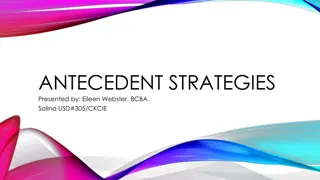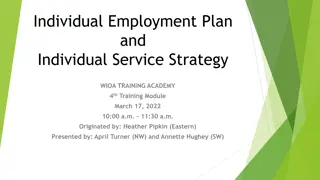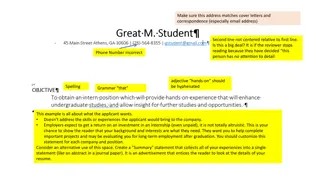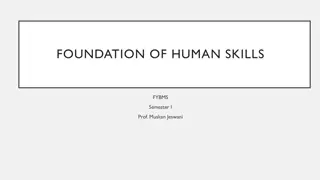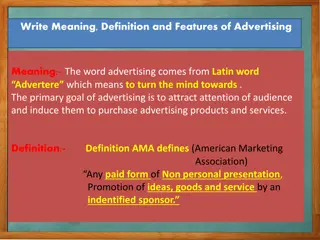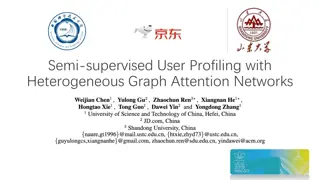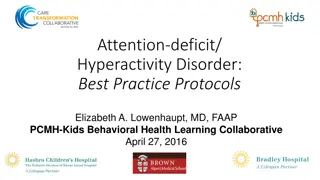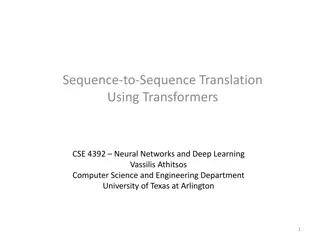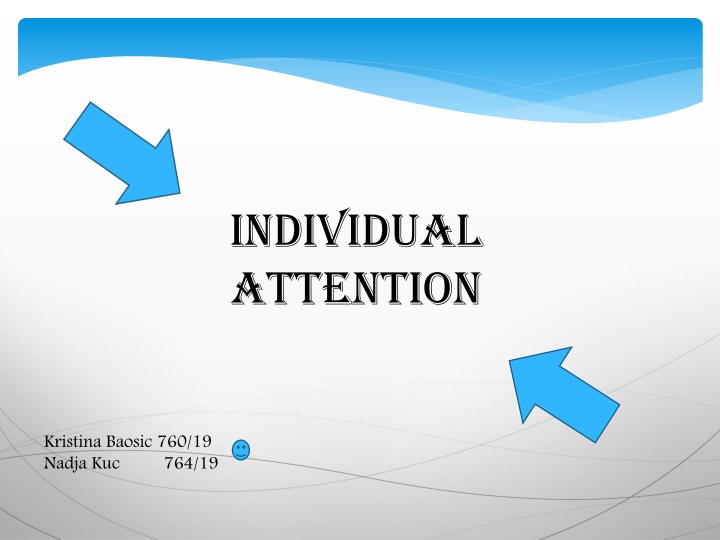
Importance of Individual Attention in Teaching and Learning Process
Implementing an individualized approach in education enhances the teaching process by catering to students' diverse learning needs and paces. Individual attention fosters better student-teacher dynamics, promotes creativity, and boosts overall development. Discover how individualization benefits learners on their educational journey.
Download Presentation

Please find below an Image/Link to download the presentation.
The content on the website is provided AS IS for your information and personal use only. It may not be sold, licensed, or shared on other websites without obtaining consent from the author. If you encounter any issues during the download, it is possible that the publisher has removed the file from their server.
You are allowed to download the files provided on this website for personal or commercial use, subject to the condition that they are used lawfully. All files are the property of their respective owners.
The content on the website is provided AS IS for your information and personal use only. It may not be sold, licensed, or shared on other websites without obtaining consent from the author.
E N D
Presentation Transcript
INDIVIDUAL ATTENTION Kristina Baosic 760/19 Nadja Kuc 764/19
Individualized approach to the learner occurs in the form of differentiation of the teaching process and individualized teaching. Individualization is directed at the speed and pace of mastering the teaching contents, the scope of the content, the methods of content acquisition, the methods used, the choice of tasks and more.
The principle of individualization in pedagogy aims at achieving the basic achievement of the educational process - the creation of versatile developed personalities who also have all socially acceptable personalities of the modern man, but also the preservation of individual potentials, that is, the potentials of the same personality of the child. The first attempts to introduce individualized teaching were made in America, while in Europe this principle was first introduced in the teaching of children with disabilities. John Locke further argued that "there are no two children who can be used by true methods", bearing in mind that blankets differ from one another to many factors with varying degrees of interest, life attitudes, motivation, speed of learning, etc.
Individual attention is important in the teaching process because: teacher training it offers better opportunities to teachers to discipline each learner children develop at different rates and learn differently learners always learn better in groups Individual attention is important in the teaching - - learning process because: teacher training programmes it offers better opportunities to teachers to discipline each learner children develop at different rates and learn differently learners always learn better in groups learning programmes prescribe it prescribe it
The main advantages of introducing an individual approach in the teacher are the following The main advantages of introducing an individual approach in the teacher are the following: improving the efficiency of the teaching process overall; increasing the efficiency of learning compared to students - the individual; improving the overall development of the child, through developing creativity; improving the creativity of the curriculum in the process of curriculum preparation and implementation and relieving it of routine in access to teaching; improving tolerance among students as well as empowering and encouraging children to embrace diversity; development of social skills in children, increasing students' motivation by providing quality feedback from teaching staff; providing feedback from the teaching staff on the part of the student, necessary for further planning and evaluation of previous work and the like.
How to Give Individual Attention to Students: Top 10 Tips How to Give Individual Attention to Students: Top 10 Tips 1. 1. Arrive early and chat Arrive early and chat The five or ten minutes before class are ideal for pleasant, relaxed chat with students. Those who arrive early will get the chance to speak to you without having to compete with the rest, and you have the opportunity to get to know them better. 2. 2. Look them in the eye and smile Look them in the eye and smile If you bestow a smile upon a student after they've raised their hand or after you see them come into the classroom, you're acknowledging them in a specific way. This is more than just a body that has entered your class and occupies a space in it, and a smile goes a long way to show them just that.
3. 3. Call them by their first names Call them by their first names Try to remember their names early on and always address your students by their first names. Instead of asking a question to the whole class in general, call on a particular student to answer it. 4. 4. Give them your full, undivided attention Give them your full, undivided attention Pair or teamwork aside, some students may get to speak directly to you for a few minutes each class. So when they do, give them your full, undivided attention. Don't write on the board or look for flashcards as you listen. Look as if you're hanging on their every word. If possible approach their desk and stand near them.
5. 5. Start class with short dialogues, warmers or ice Start class with short dialogues, warmers or ice- -breakers breakers Apart from the informal chat you may engage in before class begins, try to start each class with a short ice-breaker or warmer that relates to them on a personal level. On Mondays, you can start by asking them about their weekend. On any given day, ask if they saw a major sports event or awards ceremony. 6. 6. Remember bits and pieces of their personal life Remember bits and pieces of their personal life In a large class, you won't have the chance to know (and remember!) everything there is to know about every student, but try to remember a few facts that stand out about each one, i.e. if they have brothers or sisters, if they play musical instruments, participate in sports, etc If there is a student in particular you know nothing about - find out something!
7. 7. Help students become aware of what they are contributing to the class and what their particular strengths are. After a written assignment, mention those you especially liked and read them out loud to the class. Do the same after a crafts assignment, a test, or any other activity. Try to rotate among students and mention something each has done particularly well. Highlight individual strengths Highlight individual strengths 8. 8. Use their particular tastes and likes Use their particular tastes and likes Young learners like certain types of TV shows, and teens like others. Adult learners may enjoy other things besides TV. Use their likes and preferences: introduce pop culture references in a class with teens or what's new in the world of business in a class with adults.
9. 9. Stay on top of who's absent Stay on top of who's absent Whenever a student is absent, tell them what they missed and the homework they should do to catch up. If they missed something that is hard for them to understand, offer additional resources, or if possible, offer to explain a few minutes before or after class. 10. 10. Use their special knowledge to your advantage Use their special knowledge to your advantage Sometimes we're lucky enough to have a computer expert, a marketing specialist or financial analyst in class. Or a student from the country you're reading about. When you have to teach something a particular student may be an expert at, use their knowledge and ask them to explain the topic or give the class additional information.
The child has the right to understand and develop its potential; the child has the right to trust adults, and finally, the right to such adult support that will enable him or her to develop his or her own thinking and action strategies, not just the transfer of knowledge and skills training. M. Malaguzzi



